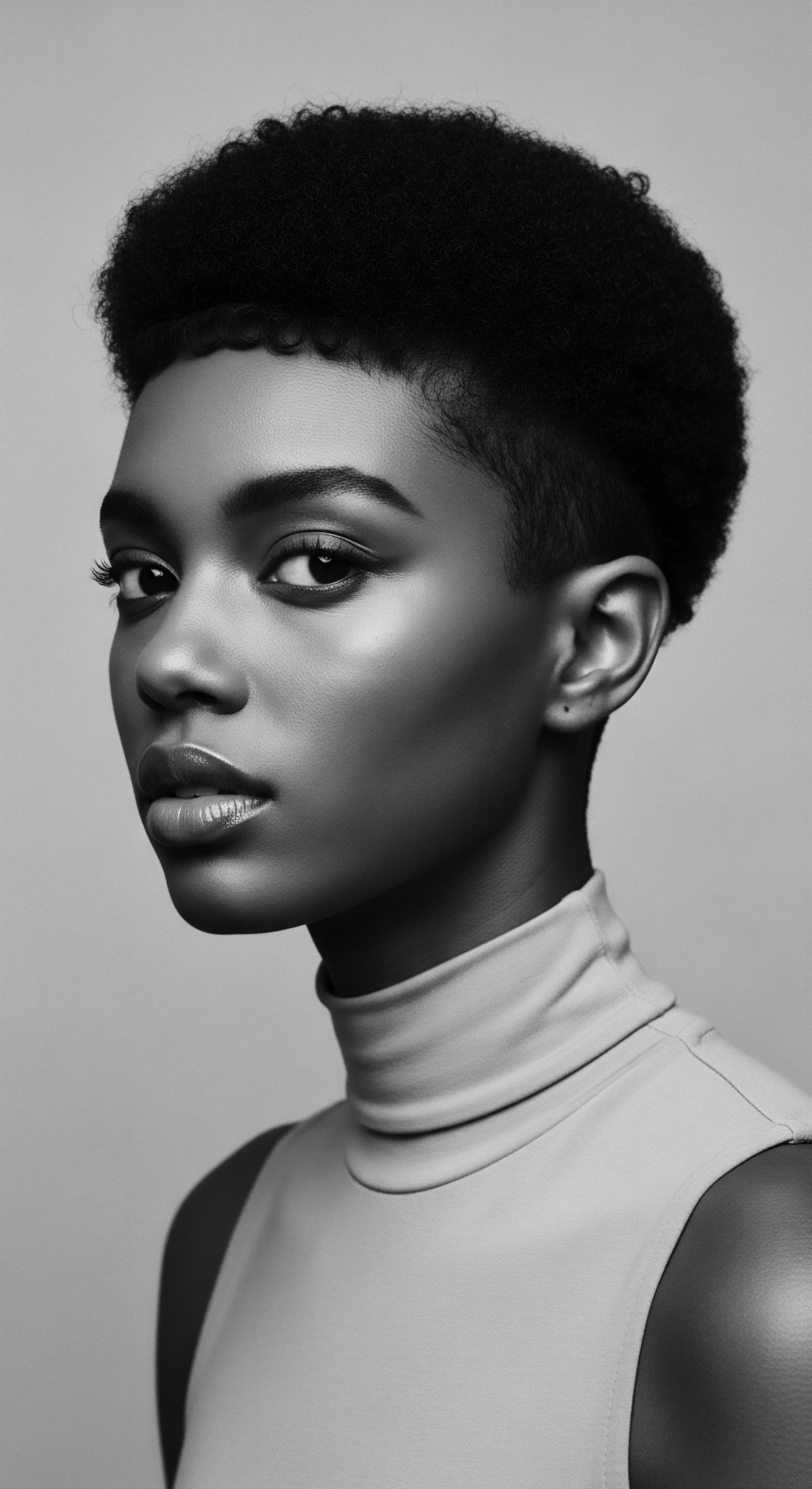
Roots
To stand upon the earth and consider a single strand of textured hair is to confront a lineage as ancient as time, a testament to resilience, adaptation, and profound cultural memory. What whispers from the very helix of a curl, a coil, a loc? It speaks of continents, of migrations, of sunshine on skin and the wisdom of hands that knew how to nourish, to shape, to celebrate.
The question, then, of whether digital spaces can truly hold this living inheritance, this vibrant current of being, becomes less about technology and more about the very essence of remembrance. We ask if the boundless expanse of the digital realm can serve as a faithful vessel for a heritage so intimately tied to touch, to ceremony, to the very breath of a people.
Each twist and turn of textured hair presents a biological marvel. The unique elliptical shape of the hair follicle, differing from the rounder cross-section of straighter hair, is a primary architect of curl patterns. This shape dictates how the keratin protein, the building blocks of hair, assembles. The cortex, the hair’s central core, and the cuticle, its protective outer layer, possess arrangements distinct to hair that coils and bends.
Understanding this elemental biology, this unique cellular blueprint, is a first step in appreciating the generations of ancestral practices developed to care for such distinct attributes. Pre-colonial African societies, for instance, understood hair not as a mere aesthetic element, but as a living crown, a symbol of identity, status, and even spiritual connection. Hairstyles communicated an individual’s geographic origin, marital status, age, ethnic identity, wealth, and rank within society. This rich symbology was not abstract; it was woven into the very act of hair preparation.
The intricate patterns of textured hair echo ancient wisdom, a biological story of adaptation, and a deep cultural connection.
The classifications we use for textured hair today, like those that categorize curls from loose waves to tightly wound coils, possess a scientific basis. Yet, even these modern systems touch upon a deeper, historical awareness of hair’s diverse forms. Ancient communities had their own lexicon, their own ways of distinguishing and naming hair types, often tied to specific regions or tribal affiliations. These traditional terms, often conveyed through oral history or communal practice, described not only the physical appearance but also the spiritual or social significance of a hair texture.
For instance, among the Yoruba, hair was considered the most elevated part of the body, with braided styles serving as conduits for messages to deities. This perspective offers a powerful counterpoint to any singular, universal beauty standard.
The growth cycle of textured hair, too, presents its own cadence. The anagen (growing), catagen (transition), and telogen (resting) phases align with universal human biology. Yet, influences unique to various historical contexts, such as nutritional shifts during forced migrations or environmental adaptations across the diaspora, have subtly shaped these cycles.
The forced displacement of African peoples during the transatlantic slave trade profoundly altered hair care practices; enslaved individuals were often stripped of their traditional tools, oils, and the communal time necessary for elaborate hair rituals, leading to matted or damaged hair often hidden beneath scarves. This historical trauma underscores the profound connection between hair, environment, and human experience.

How Does Understanding Ancestral Hair Biology Inform Contemporary Care?
Our contemporary approach to hair science, while advancing with molecular precision, often validates insights gleaned from generations of observation. The understanding that highly coiled hair requires more moisture, or that certain manipulations reduce breakage, finds roots in ancestral care regimens. These regimens, passed down through families and communities, intuitively understood the structural properties of textured hair, long before electron microscopes confirmed them. This enduring wisdom, often dismissed by colonial narratives, stands as a testament to the scientific acumen of our forebears.
- Okra ❉ Traditionally used in West Africa, its mucilage provides slip and moisture, a natural conditioner understood long before polymer chemistry.
- Shea Butter ❉ A staple across the Sahel, valued for its emollient properties and sealing capabilities, essential for dryness protection.
- Black Soap ❉ Originating from West Africa, offering a gentle yet potent cleansing, contrasting with harsh colonial-era lyes.
These traditional ingredients represent a living pharmacopeia, a collective intelligence that harnessed the natural world for holistic well-being. Their continued use in contemporary products speaks to an enduring efficacy, often now validated by modern scientific analysis of their chemical compounds and benefits. The digital space, in a curious turn, becomes a conduit for this ancient knowledge, allowing for a resurgence of interest in these ancestral resources.

Ritual
The hands that braid, the fingers that twist, the combs that part a coil into precise sections—these are the instruments of a heritage, a language spoken without words. The art and science of textured hair styling are not merely about aesthetics; they comprise a living archive of community, resistance, and self-expression. Can the digital realm, with its screens and algorithms, truly transmit the wisdom held in a grandmother’s touch, or the patient lessons passed down across generations? This inquiry guides our exploration into how ancestral techniques and modern innovations interlace within the digital expanse.
Protective styles, from intricately patterned cornrows to carefully coiled bantu knots, are more than adornments. Their origins stretch back across millennia, serving as practical solutions for hair management, protection from elements, and deeply symbolic expressions of identity. The cornrow, for instance, holds significant ancestral roots, dating back to pre-colonial Africa where styles communicated tribal affiliation, social standing, and even encoded messages. During the transatlantic slave trade, enslaved African women braided rice seeds into their hair before forced voyages, a profound act of preserving both sustenance and cultural lineage in an act of resistance.
These styles became hidden maps, conduits for survival, and quiet declarations of enduring heritage. Their preservation in digital spaces, through tutorials, historical imagery, and cultural discussions, creates a complex legacy.
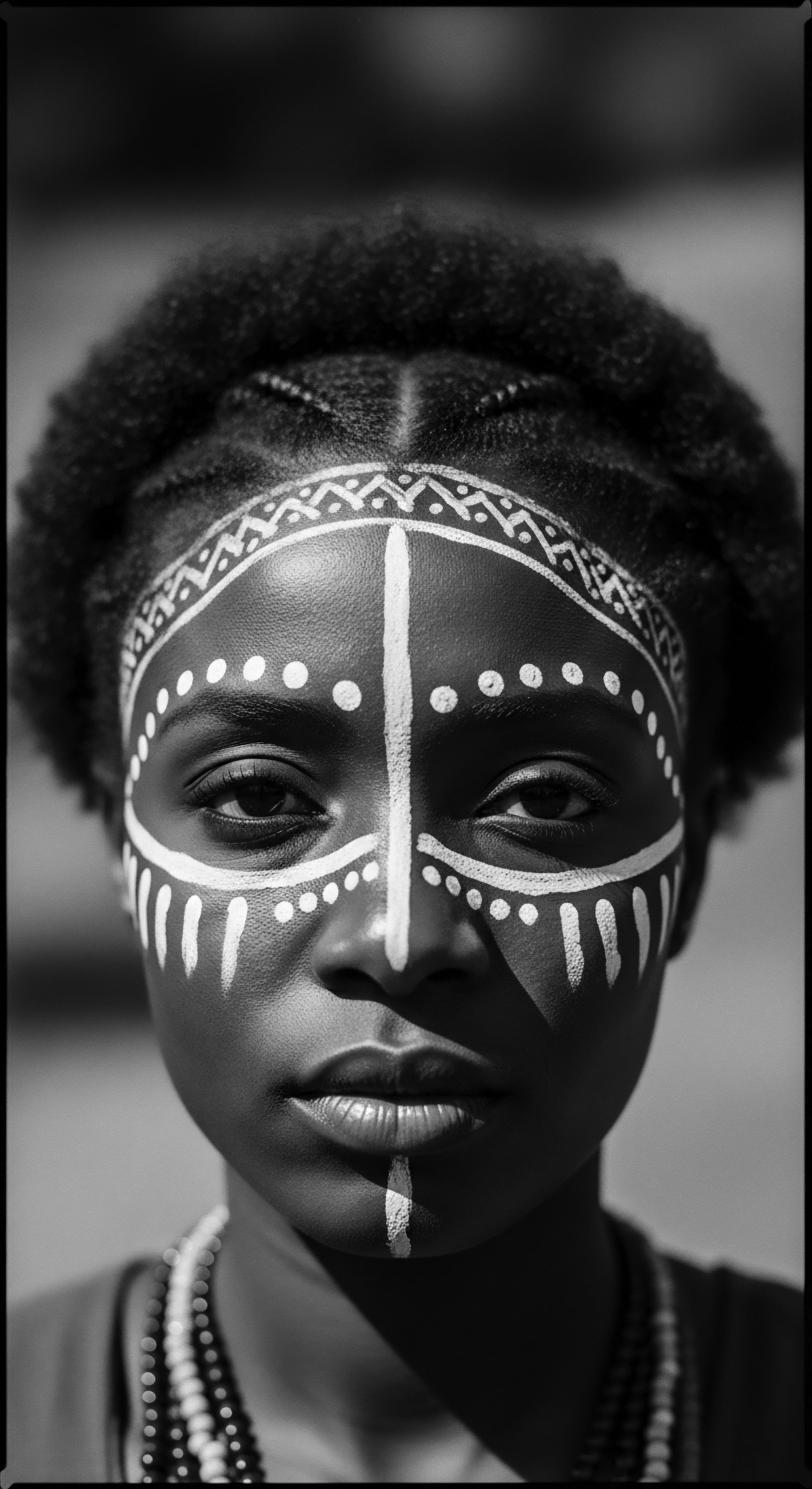
Can Digital Tutorials Replicate Hands-On Ancestral Styling?
Natural styling techniques, aimed at enhancing and defining the hair’s inherent texture, carry the echoes of age-old methods. The practice of sectioning, twisting, and coiling hair, now ubiquitous in digital tutorials, finds its antecedents in practices honed over centuries. Before the advent of mass-produced tools, hands were the primary implements, shaping and sculpting hair with an intuitive understanding of its properties. Clay, natural oils, and plant extracts were applied to condition and hold styles, their efficacy born from empirical observation.
While digital platforms democratize access to these techniques, offering visual demonstrations to a global audience, they also present a challenge ❉ how does one convey the tactile wisdom, the subtle pressure of a finger, the precise tension of a braid that comes from repeated, generational learning? The digital medium excels at visual instruction yet struggles to replicate the embodied transmission of skill, the quiet intimacy of shared styling moments.
The digital realm offers a vast library of styling knowledge, but the true wisdom of textured hair care resides in the hands, passed through generations.
The use of wigs and hair extensions also possesses a long and layered cultural background, particularly within Black and mixed-race communities. Historically, these were not solely about illusion. In some African societies, elaborate headpieces and extensions denoted status, spirituality, or ceremonial roles, predating their Western counterparts. After slavery, and during periods of intense racial discrimination, wigs and straightened extensions sometimes served as a means of survival, a way to navigate oppressive beauty standards in professional or social spheres.
The digital age has seen an explosion in the accessibility and variety of these hair additions. Online marketplaces and social media platforms facilitate the exchange of techniques, reviews, and a broader acceptance of their use as a form of self-expression and protective styling. Yet, this digital accessibility also raises questions regarding authenticity and cultural ownership, a complex aspect of their digital preservation.
Consider the tools themselves. From traditional wooden combs, often carved with symbolic motifs, to modern brushes designed for specific detangling needs, each tool carries its own history. The act of coiling hair around a finger for definition, or the use of a simple string to tie off a braid, speaks to ingenuity born from resourcefulness.
| Tool Category Combing/Detangling |
| Ancestral Example (Pre-Digital) Wide-Tooth Wooden Combs ❉ Often hand-carved, used gently to separate strands and distribute natural oils. |
| Modern Digital-Era Equivalent Denman Brush ❉ Designed with specific bristle patterns for detangling and curl clump formation. |
| Tool Category Styling/Sectioning |
| Ancestral Example (Pre-Digital) Fingers/Twigs ❉ Primary tools for precise parting and creating twists or coils, conveying tactile skill. |
| Modern Digital-Era Equivalent Rattail Combs & Clips ❉ Used for clean sections, facilitating intricate styles shown in video tutorials. |
| Tool Category Finishing/Adornment |
| Ancestral Example (Pre-Digital) Cowrie Shells & Beads ❉ Integrated into braids and locs, signifying status, wealth, or spiritual protection. |
| Modern Digital-Era Equivalent Hair Jewelry & Fabric Wraps (digitally inspired) ❉ Often influenced by traditional designs, widely shared and replicated online. |
| Tool Category Digital platforms showcase both ancestral tool wisdom and modern innovations, creating a continuous dialogue between past and present practices. |
The digital medium allows for the archiving of visual guides, the documenting of historical styles, and the sharing of personal styling journeys. This collective digital memory becomes a rich, albeit sometimes overwhelming, repository. The challenges lie in discerning genuine historical practice from contemporary interpretation, and in ensuring that the digital ‘showcase’ does not inadvertently diminish the profound, lived experience of these hair rituals.
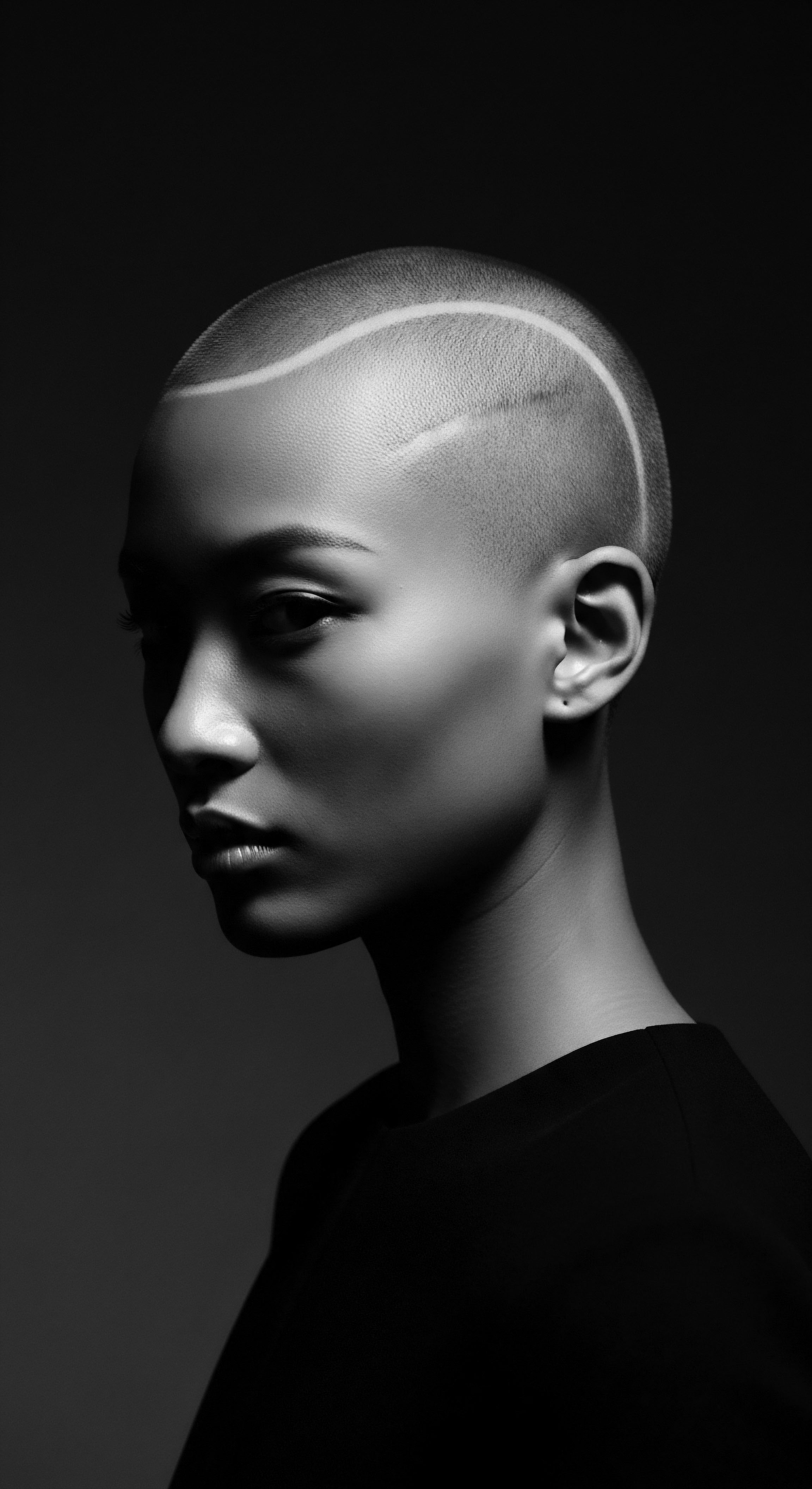
Relay
To truly assess whether digital spaces preserve hair heritage, we must consider the flow of knowledge, the ‘relay’ of wisdom from one generation to the next, from elder to youth, from community to broader discourse. This movement of understanding, particularly concerning textured hair, carries within it stories of both profound care and the painful legacies of erasure. The digital realm, with its capacity for boundless dissemination, presents both a remarkable opportunity and considerable challenges for this transmission, particularly when rooted in ancestral wisdom and lived experience.
Building a personalized textured hair regimen, deeply rooted in ancestral wisdom yet informed by contemporary science, stands as a powerful act of reclamation. Centuries before scientific laboratories analyzed lipid barriers or protein structures, African communities possessed an intuitive, empirical understanding of what kept hair healthy. This knowledge was transmitted through observation, storytelling, and hands-on guidance. The practice of applying natural oils, clays, and herbal concoctions was not arbitrary; it was a sophisticated system of care designed to address the specific needs of highly coiled hair in diverse climates.
The digital era now sees a resurgence of interest in these traditional ingredients, with countless online discussions dissecting the benefits of Chebe Powder from Chad, Fenugreek from India (through diasporic cross-pollination), or various indigenous plant extracts. The challenge lies in ensuring that these ancestral practices are presented with proper cultural context and respect, rather than being stripped of their origins and commodified without acknowledgement.
The nighttime sanctuary, specifically the wisdom surrounding sleep protection for textured hair, offers a vivid example of heritage relayed through practical necessity. The bonnet, the silk scarf, the satin pillowcase—these are not recent inventions. Their use is deeply historical, born from the need to protect delicate hair strands from friction, breakage, and moisture loss during sleep. These simple accessories guard against tangling and preserve intricate styles, extending their life and minimizing daily manipulation.
For generations, grandmothers insisted upon these practices, not with scientific jargon, but with the quiet authority of lived experience. The digital sphere has certainly amplified this wisdom, making knowledge of protective nighttime routines accessible globally. Social media discussions abound with comparisons of bonnet styles, debates about fabric, and testimonials on their efficacy. This digital amplification, however, runs the risk of flattening the historical context, detaching the practice from its origins in the resourceful, caring traditions of Black and mixed-race communities.

Does Digital Access Equate to Deeper Cultural Understanding?
A significant challenge in digitizing intangible cultural heritage, such as traditional hair practices, involves capturing the tacit knowledge and embodied experience that accompany them. Researchers note that while digital tools offer versatile resources, many inventions remain object-centric and struggle to support the living, evolving nature of such heritage. For instance, the exact feel of oil being worked through strands, the rhythmic pull of a comb, or the unspoken cues between a stylist and client are difficult to translate into binary code or even high-resolution video.
The digital world has certainly created a compelling compendium for textured hair problem-solving. Issues like dryness, breakage, or scalp irritation, once addressed through local remedies and community healers, now find diagnosis and solutions within online forums, expert videos, and virtual consultations. The historical context, however, is key. Many common hair issues today stem, in part, from centuries of harmful practices imposed during slavery and colonialism, which forced the adoption of Eurocentric beauty standards and the use of harsh chemicals.
The Civil Rights Movement, with the re-emergence of the Afro hairstyle, marked a powerful return to natural textures, symbolizing Black pride and activism. This historical shift laid groundwork for the modern natural hair movement, which thrives digitally.
The role of digital platforms in fostering community around textured hair experiences cannot be overstated. Online natural hair communities, particularly on platforms like YouTube and Instagram, have created virtual support systems. These spaces allow Black women to exchange information about hair care, discuss product efficacy, and share personal journeys of embracing their natural textures, significantly impacting perceptions of beauty and self-esteem.
This phenomenon offers a counter-narrative to historical media landscapes that often lacked diverse representations of textured hair. This self-generated content serves as a living archive, capturing contemporary practices and personal narratives that might otherwise vanish.
Digital platforms serve as both a mirror and a megaphone for textured hair heritage, reflecting ancestral practices while amplifying contemporary voices.
Holistic influences on hair health, deeply embedded in ancestral wellness philosophies, find a renewed stage in digital discourse. Traditional healing systems often viewed hair as an extension of one’s overall vitality, affected by diet, stress, and spiritual well-being. This perspective encourages a view beyond topical treatments, considering the interconnectedness of mind, body, and hair.
Digital platforms, by hosting discussions on nutrition, stress management, and mindful living in relation to hair health, help to reconnect these threads of ancestral understanding with modern wellness trends. The challenge, as always, is ensuring that the pursuit of digital information does not replace the wisdom found in direct experience, communal living, and the guidance of respected elders within one’s own family or cultural lineage.
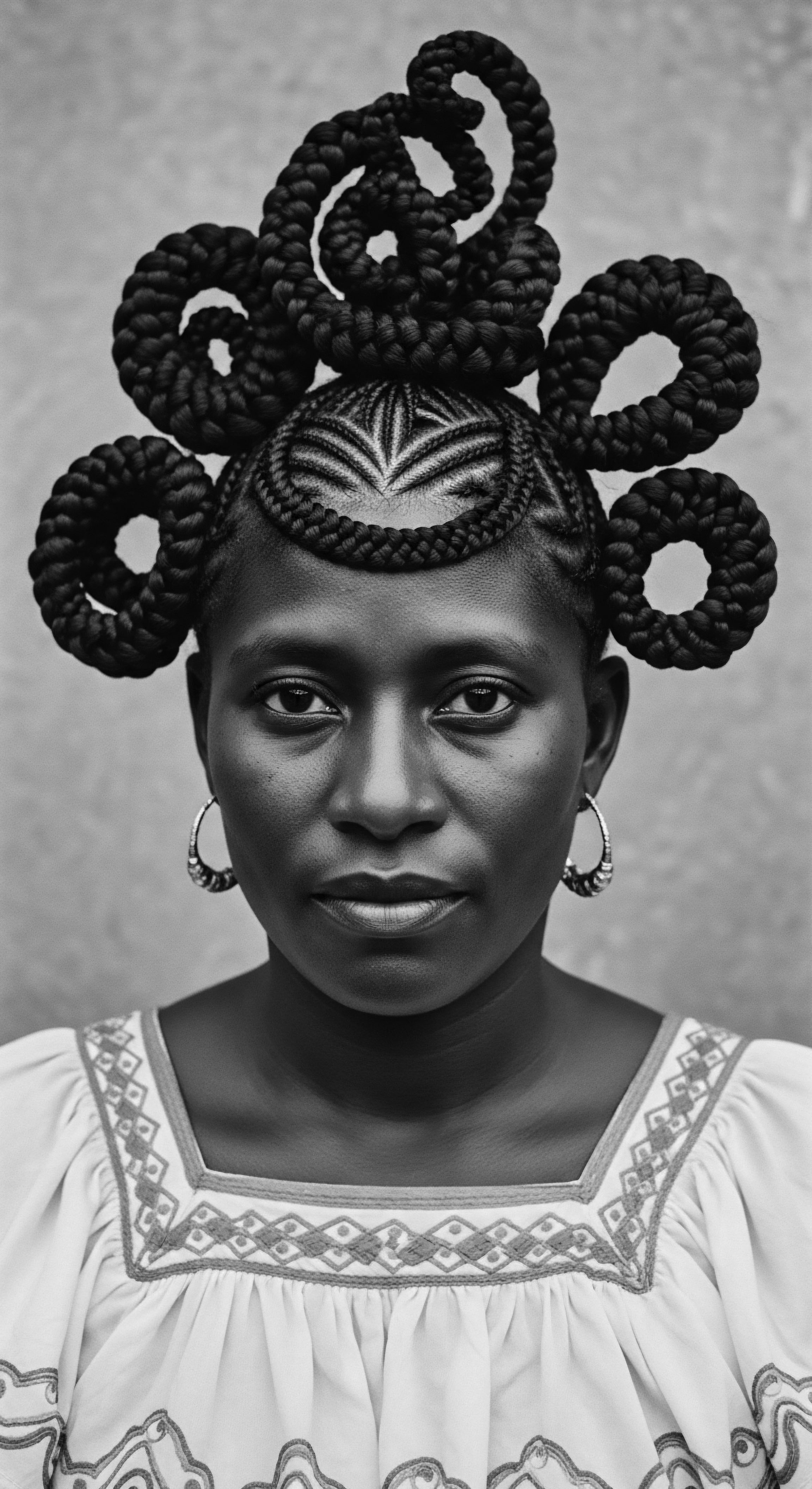
Reflection
The journey through the intricate world of textured hair heritage, guided by the question of digital preservation, leaves us with a quiet contemplation. Digital spaces, undeniably, have reshaped the contours of how we access, share, and perceive the cultural memory bound to our hair. They have democratized knowledge that was once confined to whispered family secrets or specialized communal spaces, offering a vibrant global stage for diverse textures and ancestral practices. The ability to witness a braiding technique from West Africa, learn about a forgotten herbal remedy from the Caribbean, or see a thousand variations of a twist-out from across the diaspora, all within moments, marks a profound shift.
Yet, this digital efflorescence calls for thoughtful custodianship. The spirit of ‘Soul of a Strand’ whispers of a living archive, not a static repository. It acknowledges that true preservation is not merely about digitizing images or transcribing recipes; it resides in the continued practice, the embodied knowledge, and the living breath of community.
Digital spaces serve as potent tools for discovery and connection, allowing us to find our reflections in the experiences of others, reinforcing the validity and beauty of our own hair journeys. They offer a powerful antidote to historical narratives of denigration, presenting a collective testament to the resilience and creative genius inherent in textured hair heritage.
The screen, in its brilliance, reflects fragments of truth. The full narrative, however, lives in the intergenerational dialogue, the patient hand-on-hand instruction, the scent of ancestral oils, and the shared laughter during a styling session. Digital spaces preserve records of hair heritage, enabling its spread and fostering its celebration. The enduring task, then, is to ensure that these digital records continually inspire and reinforce the living heritage, spurring us to engage with our strands not just on screen, but in the tender, tangible rituals that connect us to the source.
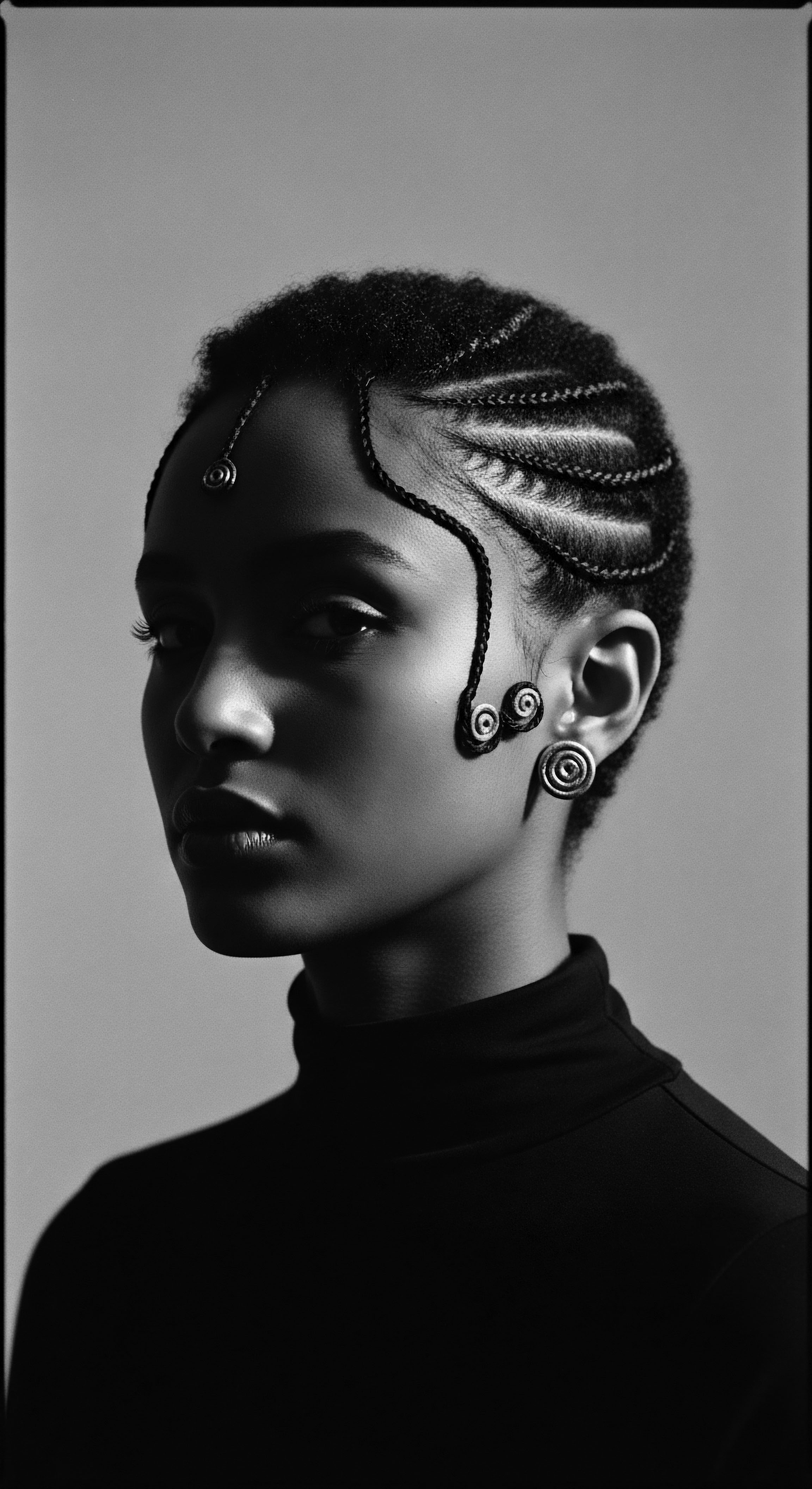
References
- Adesina, O. & Babarinsa, R. (2022). The History of Black Hair. BLAM UK CIC.
- Byrd, A. D. & Tharps, L. D. (2001). Hair Story ❉ Untangling the Roots of Black Hair in America. St. Martin’s Press.
- Chambers, S. (2024). The History of Afro Hair. Nuevo Noir.
- Dudley, A. P. (2022). The Colonial Roots of Black Barbers and Hairdressers. Charleston County Public Library.
- Haaruun, A. & Watson, M. (2014). Digital Beauty ❉ Screening Black Hair in Cyberspace. In K. Ross (Ed.), The Handbook of the Social Media Revolution. Brill.
- Ifabumuyi, O. (2023). What Every Dermatologist Must Know About the History of Black Hair. Cutis.
- Njoku, I. S. (2019). Case studies of Large-Scale Digital Preservation Initiatives (LSDIs) as a Conservation Strategy for Heritage materials in Africa. ResearchGate.
- Oyelere, V. Oyewumi, K. & Oyewole, O. (2023). The Genomic Variation in Textured Hair ❉ Implications in Developing a Holistic Hair Care Routine. MDPI.
- Renard, L. (2022). Intangible Cultural Heritage & Development. Fondazione Santagata.
- Roberts, A. R. (2018). Recover and Remix ❉ Digital Humanities, Heritage Preservation, and Black Geographies. Northwestern University Press.
- Silveira, L. (2024). Nostalgia Fuels the Revival of Ancestral Beauty Rituals. Fashion Is Psychology.
- Sutherland, T. (2022). Introduction ❉ The Promise and Possibility of Black Archival Practice. Archival Science, 22(2), 101-115.
- Wang, X. Li, X. & Li, Q. (2023). Digital Hair Creation for Archaeological Facial Approximation ❉ George Dixon, the Last Captain of the Hl Hunley. Clemson OPEN.
- Wekesa, K. Barasa, F. & Wanyenya, I. (2024). Digital Preservation Strategies for Cultural Heritage in North Africa in Egypt. IPRJB.
